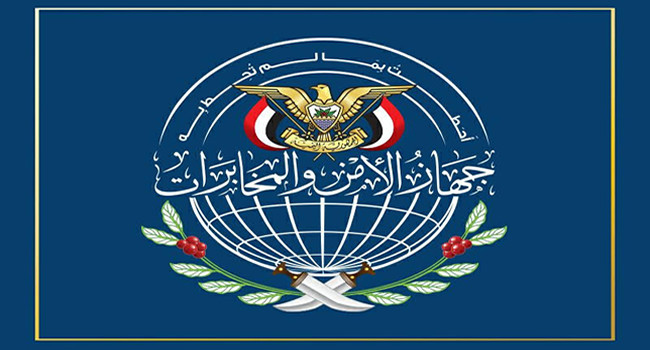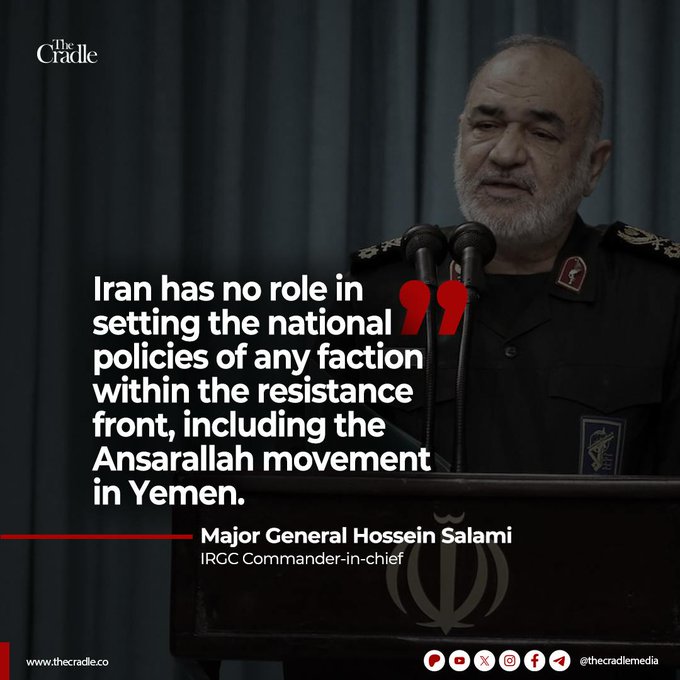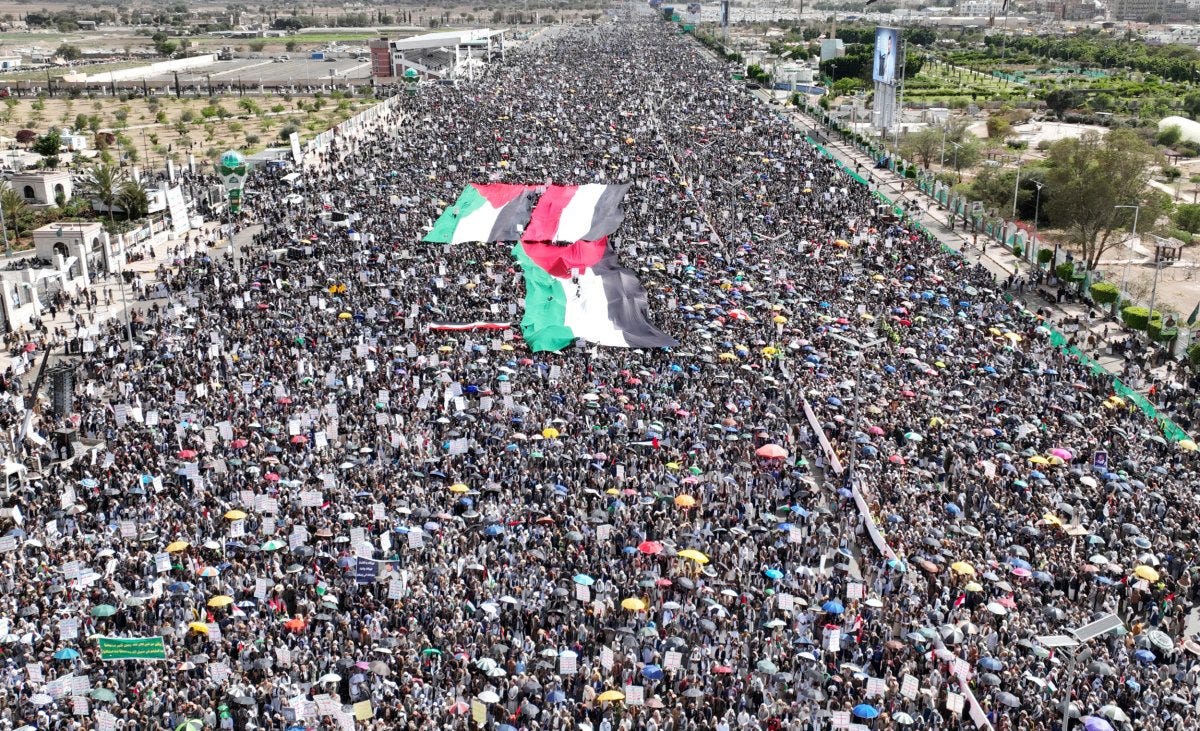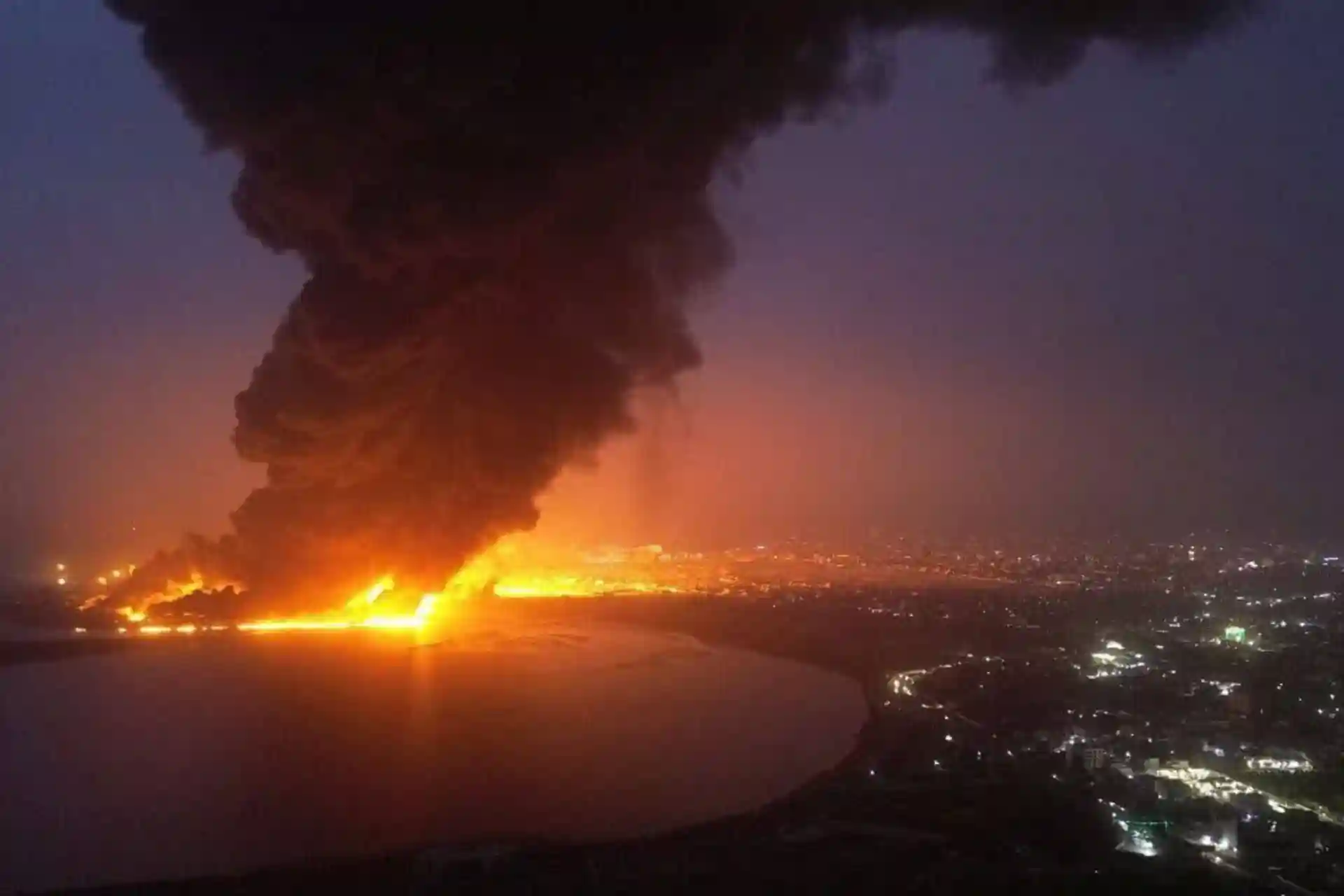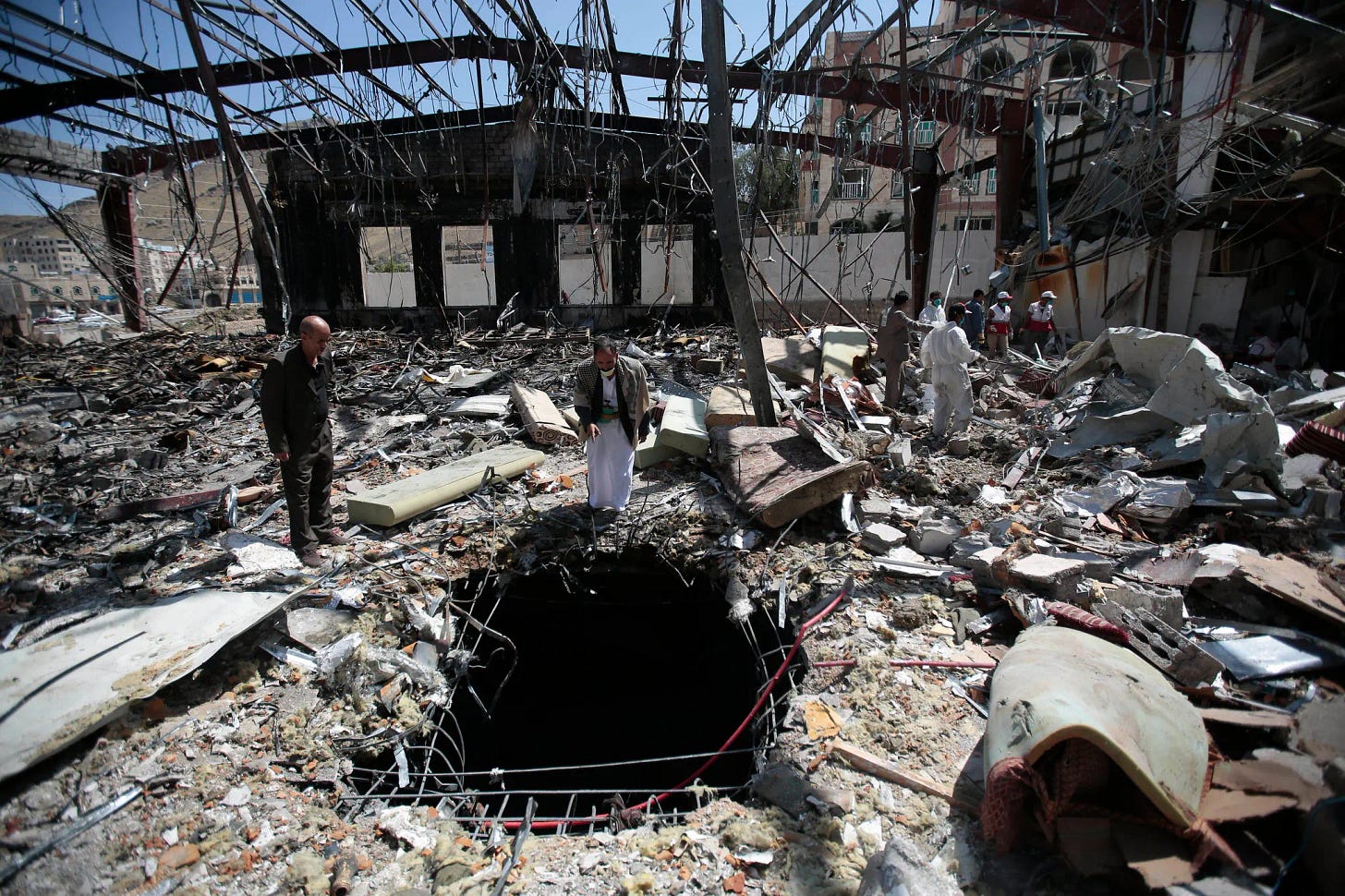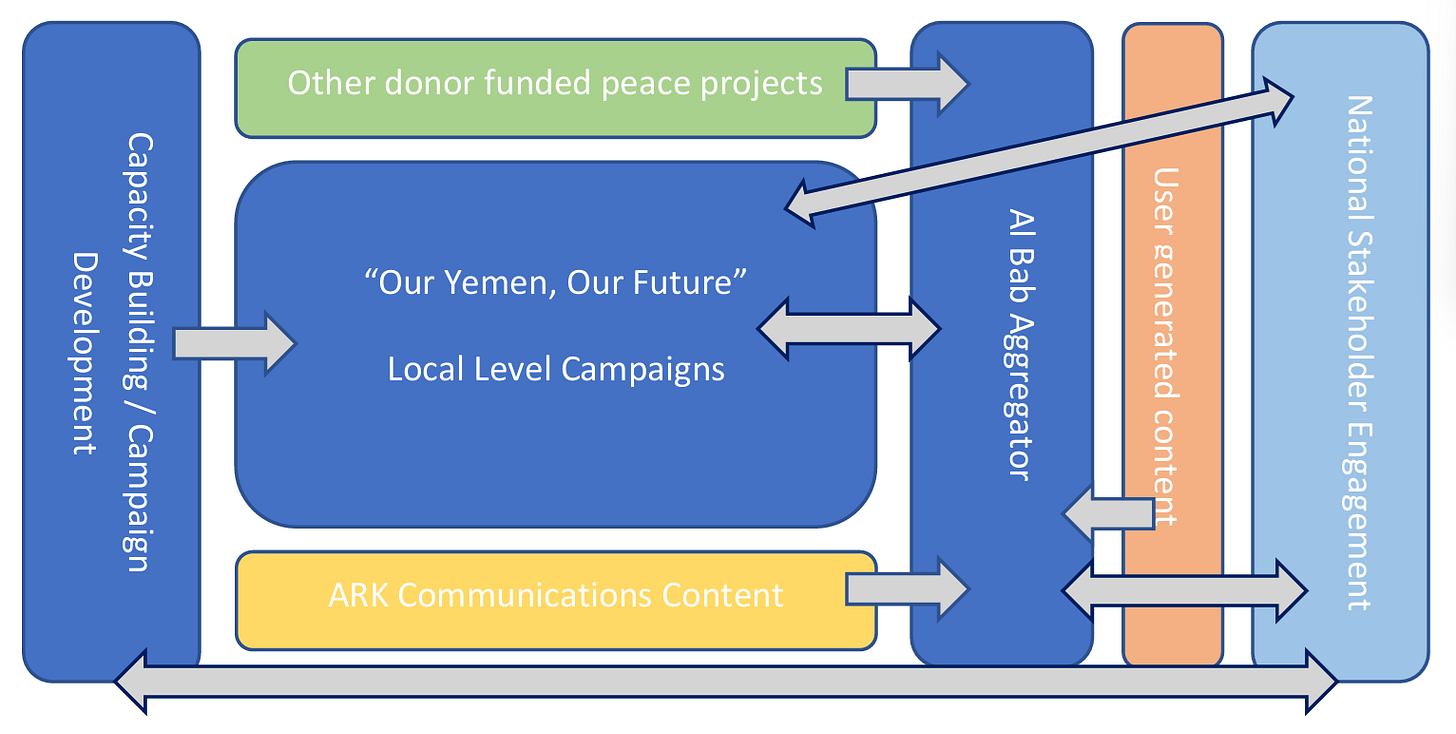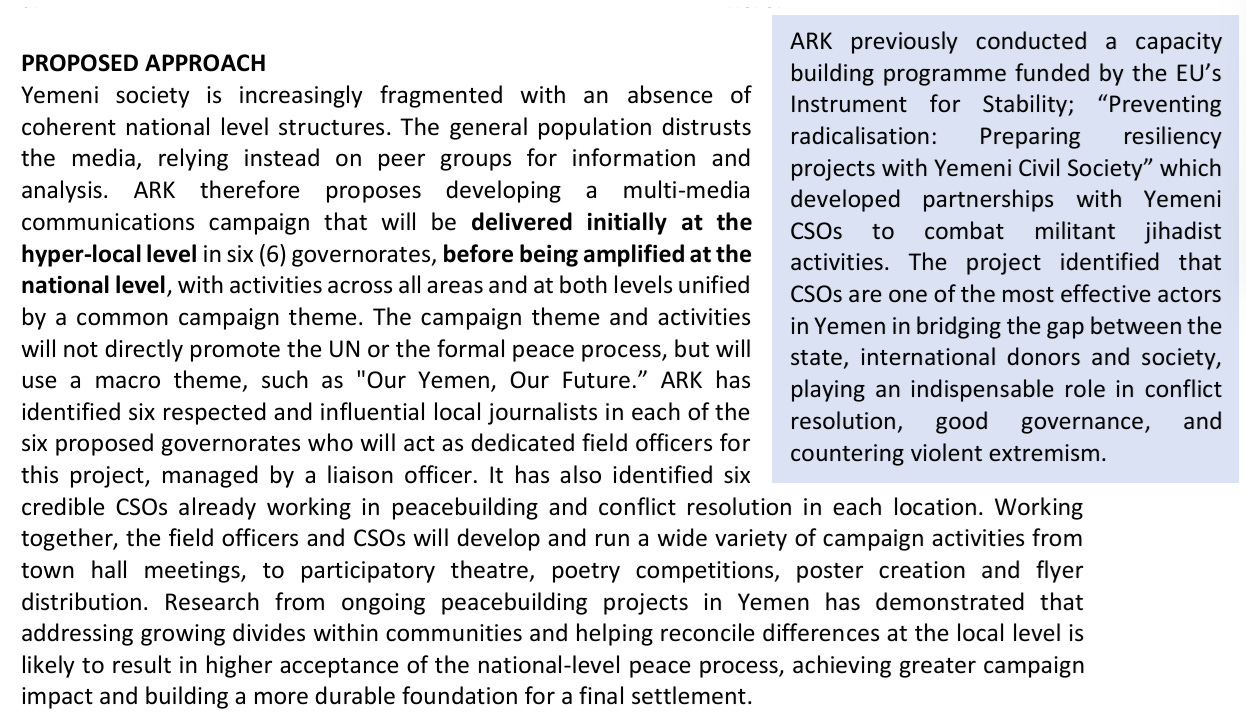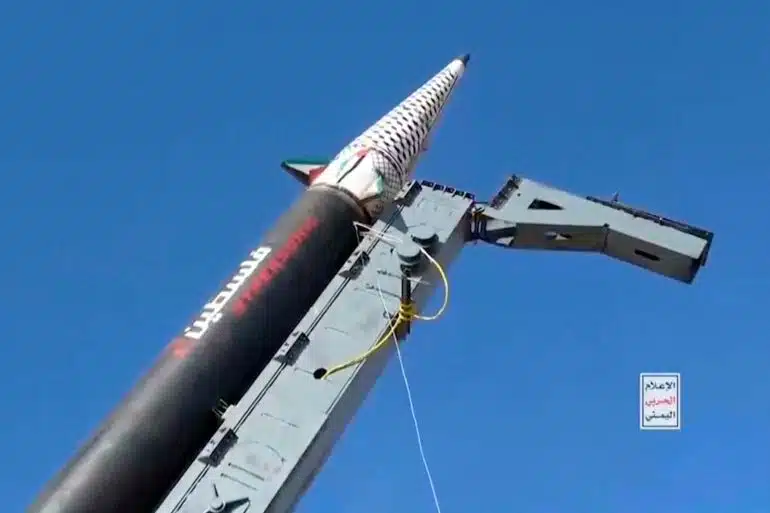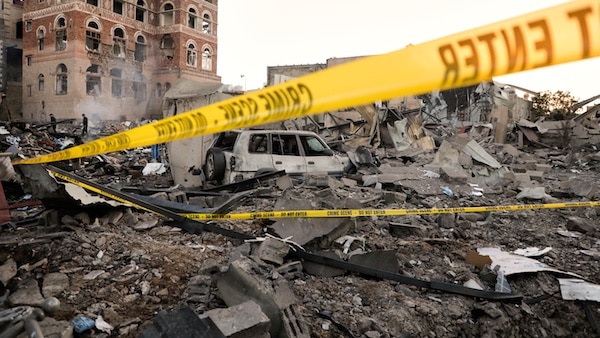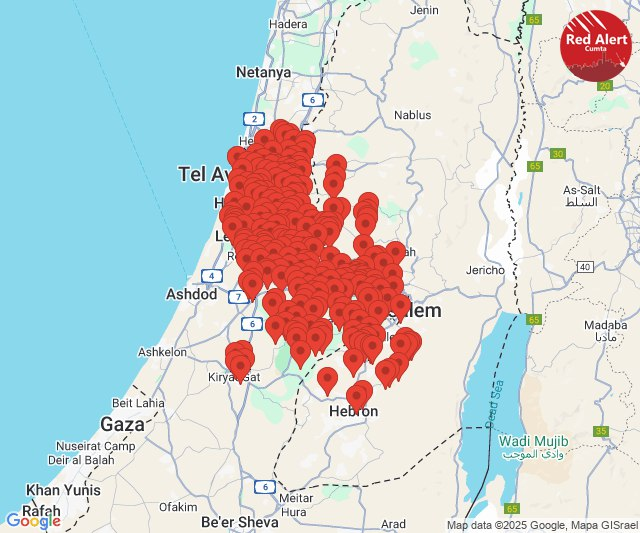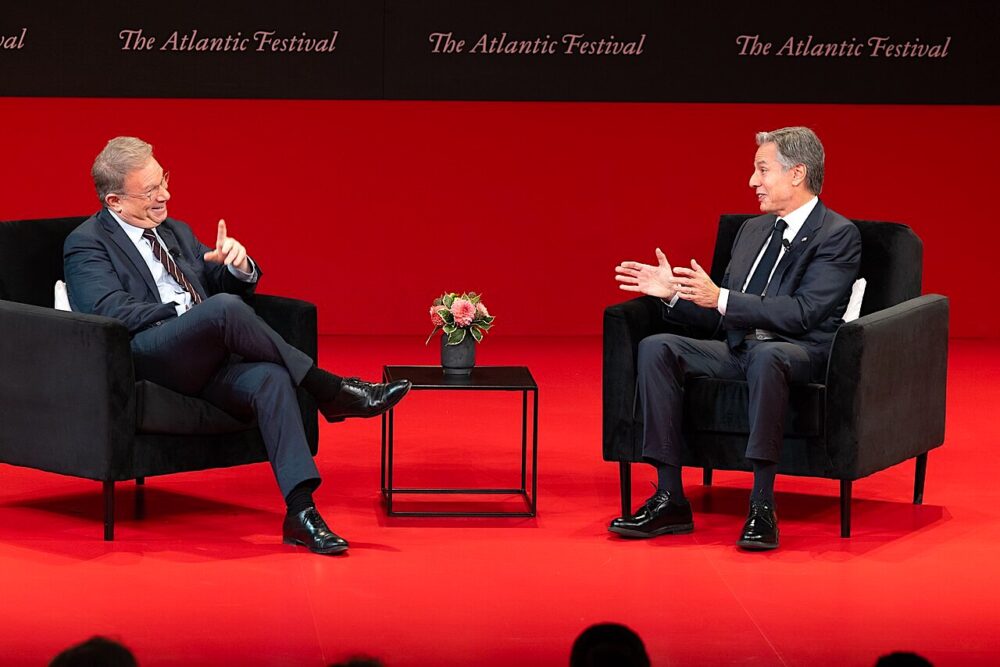Yemen, long seen as a victim of external aggression, is now rewriting the rules of engagement in West Asia. By targeting Israel and the US–UK navies with unflinching precision, Ansarallah has forced its adversaries into an unwinnable corner.
Mohammed Moqeibel
JAN 7, 2025

Photo Credit: The Cradle
Since the launch of Operation Al-Aqsa Flood in October 2023, Yemen’s Ansarallah-aligned armed forces have emerged as a pivotal force in the Axis of Resistance for their unwavering support for Gaza.
Near-daily missile and drone strikes targeting Israel, along with disruptions to maritime trade routes linked to Tel Aviv’s interests, have complicated strategies for both the occupation state and its US backer.
In yet another bold demonstration of its new military capabilities, Yemen recently claims to have downed a US F-18 jet and thwarted a US offensive by targeting the USS Harry S. Truman aircraft carrier, forcing it to retreat to safety over 1,500 kilometers away. This extraordinary operation not only exposed critical vulnerabilities in US naval defenses but also showcased Sanaa’s growing military prowess and unrelenting defiance.
In light of these developments, the question remains: How can Israel and the US address the formidable front opened by Yemen?
Can airstrikes deter Yemen?
The US–UK coalition has launched over 700 airstrikes on Yemen since the beginning of the year, allegedly targeting weapons storage sites and retaliating to Yemeni forces’ attacks on Israel-linked shipping vessels.
Despite these operations, Yemeni military strikes have only intensified in both frequency and firepower, hitting trade ships connected to Israel, as well as the occupied territory itself with domestically manufactured missiles and drones. This confirms the ineffectiveness of western airstrikes in achieving their intended objectives.
Israel, which has largely relied on US and UK offensives to avoid direct confrontation with the Yemeni Armed Forces (YAF), recently resorted to bombing the country’s already weakened civilian infrastructure in an attempt to save face. The latest Israeli airstrikes, which took place on 2 January, targeted several Yemeni provinces, in addition to Sanaa International Airport.
Commenting on the airstrikes, Ansarallah Spokesman Mohammad Abdul Salam stated: “If the Zionist enemy thinks that its crimes will stop Yemen from supporting Gaza, it is delusional.”
Despite growing hopes among adversaries that the airstrikes carried out by the US and Israel might achieve a breakthrough against Sanaa, the facts point to the impossibility of any significant impact: Between 2015 and 2023, Yemen has been subjected to over a quarter of a million documented airstrikes by the US-backed Saudi–UAE coalition, making Yemen one of the most bombed countries in history.
Even the notion of targeting Ansarallah leaders through airstrikes, similar to assassination operations against other resistance leaders in West Asia, seems equally impractical.
Yemen is not Syria: A flawed comparison
The idea of replicating Syria’s civil war in Yemen, with the involvement of Saudi Arabia, the UAE, and now Israel, has gained traction among policymakers. Former Israeli Defense Minister Avigdor Lieberman criticized Israel’s strategy, advocating for attacks on energy facilities operating under the jurisdiction of the de facto government in Sanaa and funding anti-Ansarallah factions.
He emphasized the need to engage with the internationally recognized Yemeni government in Aden, stating, “The Houthis should be preoccupied within Yemen, not with attacks on Israel.”
Similarly, US diplomatic efforts have sought to mobilize regional allies, with US officials meeting Yemeni, Saudi, and Emirati leaders in Riyadh to discuss strategies to weaken Ansarallah.
The war drums are constant now. Hamid al-Ahmar, a prominent Islah Party leader, has announced that Ansarallah's downfall is imminent, drawing on regional experiences, particularly in Syria, where the battle to overthrow the government was long and hard-fought.
Major General Saghir bin Aziz, head of the Yemeni army loyal to the Saudi–Emirati coalition, also claims that Yemen is heading toward a fight to end “Houthi” rule.
At the same time, these developments coincide with military mobilizations on the western coast by forces loyal to the Aden-based government, supported by the US.
In response, numerous Yemeni tribes have instead declared their allegiance to Ansarallah, announcing tribal mobilization across several Yemeni provinces to confront any aggression against Yemen.
Unlike the former Syrian government of Bashar al-Assad, Ansarallah has emerged from years of war stronger and more cohesive, developing advanced military capabilities on the battlefield, including becoming the first non-state actor to deploy hypersonic missiles. Ansarallah’s ability to directly threaten US and Israeli interests – in addition to Saudi and Emirati targets – sets it apart from the Syrian conflict dynamics.
Attempts to ignite internal strife or mount large-scale offensives in Yemen risk backfiring, as Ansarallah has demonstrated its ability to mobilize tribal support and launch devastating counterattacks.
Efforts to rally forces loyal to the Saudi-backed Yemeni government, such as those led by Tariq Saleh on the western coast, face significant obstacles.
The western coastal region, akin to a strategic Philadelphia Axis for Yemen, holds immense importance.
Its capture could pave the way for broader offensives, but Ansarallah’s fortified positions and military preparedness make such ambitions highly precarious. Unlike Damascus, Sanaa is secured by a popular and battle-hardened force that has consistently outmaneuvered its adversaries.

A map showing the distribution of control in Yemen.
Sanaa’s perspective on escalation
For the Sanaa government, the growing involvement of the US and Israel represents desperate attempts to destabilize Yemen. Abdul Malik al-Houthi, Ansarallah’s leader, dismissed these efforts as “silly and foolish,” asserting that the YAF is fully prepared to confront any escalation.
In a post on X, Hussein al-Azzi, a senior political figure, noted that key regions like Marib are increasingly leaning toward Ansarallah due to widespread corruption within rival factions and areas. Such shifts signal the potential for Ansarallah to reclaim further territory with minimal resistance.
Defections from coalition-aligned forces further complicate US and Israeli calculations. Over 100 soldiers and officers recently joined Ansarallah, reflecting internal fractures within the western-led coalition.
Meanwhile, Mohammed Ali al-Houthi, head of the Supreme Revolutionary Committee, warned Saudi Arabia to “restrain the Americans,” threatening retaliation against US interests if the aggression continues. He affirmed that there would be no red lines if the situation worsens.
Similarly, Ansarallah Spokesman Mohammed al-Bukhaiti responded to Israeli assassination threats by warning of his organization’s capability to target US, British, and Israeli leaders in kind.
“We affirm to the Americans, the British, and the Zionist entity, that we, in turn, have the capability and boldness to target American, British, and Israeli leaders, whether military or political. If they wish to turn this into a war of leadership assassinations, then we say: welcome to it.”
A defiant Yemen reshapes the resistance
Yemen’s entrance into the war with Israel has redefined the balance of power in the region. Despite relentless airstrikes, economic blockades, and diplomatic isolation, Ansarallah has emerged as a formidable force, unyielding in its support for Gaza and its resistance to foreign intervention.
With each missile and drone strike, Yemen sends a clear message: it will not bow to the pressures of global powers. As the winds of conflict escalate, Yemen’s resilience serves as a testament to its unwavering and steadfast determination, setting a new tone for the entire Axis of Resistance. It demonstrates that "well-behaved" resistance tactics are ineffective when fighting vicious, lawless adversaries like the US and Israel.
Forged by years of adversity, Yemen is not merely enduring – it is asserting its place as a pivotal player in West Asia’s Axis of Resistance, replacing Syria as an integral Arab state in the regional alliance.
In the face of increased aggression, Yemen’s strength and resolve have turned it into a force that neither Israel nor the US and its allies in the region can afford to underestimate.
https://thecradle.co/articles/a-warning ... isnt-syria
Sanaa thwarts UK–Saudi spy plot to create 'target bank' in Yemen
The announcement comes as Israel struggles to obtain intelligence for its strikes targeting Ansarallah and the Yemeni army
News Desk
JAN 6, 2025

(Photo credit: Getty Images)
The security services of Yemen’s Sanaa government announced on 6 January that they foiled a UK–Saudi espionage plot against the country, which was aimed at gathering intelligence on Yemeni military sites and leaders.
Due to the “failure of the evil trio (America, Britain, and the Israeli enemy entity) to stop the Yemeni operations supporting Gaza,” Israeli, US, UK, and other spy agencies began work to “create a target bank,” Sanaa’s security services said in a statement.
“British intelligence, in cooperation and coordination with Saudi intelligence, sought to attract, recruit, and train espionage elements for the purpose of carrying out intelligence activities targeting the country's strategic capabilities,” the statement added.
The recruits were tasked with monitoring and gathering intelligence on sites and facilities belonging to the Yemeni army’s drone and missile units, as well as other military and security sites.
The tasks included “monitoring and observing the locations, homes, and movements of some state leaders.”
The statement also mentions that the recruits underwent evaluation and testing by Saudi and UK officers in Riyadh, and then enrolled in training programs in surveillance and intelligence gathering. The spies were trained to use different devices and programs before being deployed back to Yemeni territory.
“The information obtained from those who were arrested and through what they confessed to, indicates that they carried out intelligence tasks and activities assigned to them by British and Saudi officers.”
The security forces “will spare no effort in carrying out their responsibility now and in the future in securing the home front, and fortifying it from any attempts to infiltrate by the American, Israeli, British or other enemy intelligence services.”
Israel’s large-scale attack on Yemen late last month – which Tel Aviv vows will not be the last – has failed to deter the Yemeni Armed Forces (YAF) and Ansarallah from continuing their missile and drone operations against Israel.
The YAF announced on 5 January that it targeted an Israeli power station near Hadera with a ballistic missile. Tel Aviv said a Yemeni missile was intercepted before entering its airspace. Three days earlier, Sanaa’s forces also targeted a power station near Tel Aviv, with video footage showing the moment of impact.
Israeli media has recently reported that it has been difficult to draft a policy on countering drone and missile attacks – particularly due to a lack of intelligence information.
“The Israeli defense establishment recognizes its limitations. The significant distance from Yemen makes it very challenging to establish intelligence access, recruit agents, and deploy technological measures for executing strategic operations,” Israeli newspaper Haaretz reported on 2 January.
Israeli Defense Minister Israel Katz threatened last month that Ansarallah and Yemeni army leaders will be “dealt with” as Hezbollah and Hamas's leaders were.
https://thecradle.co/articles/sanaa-thw ... k-in-yemen
